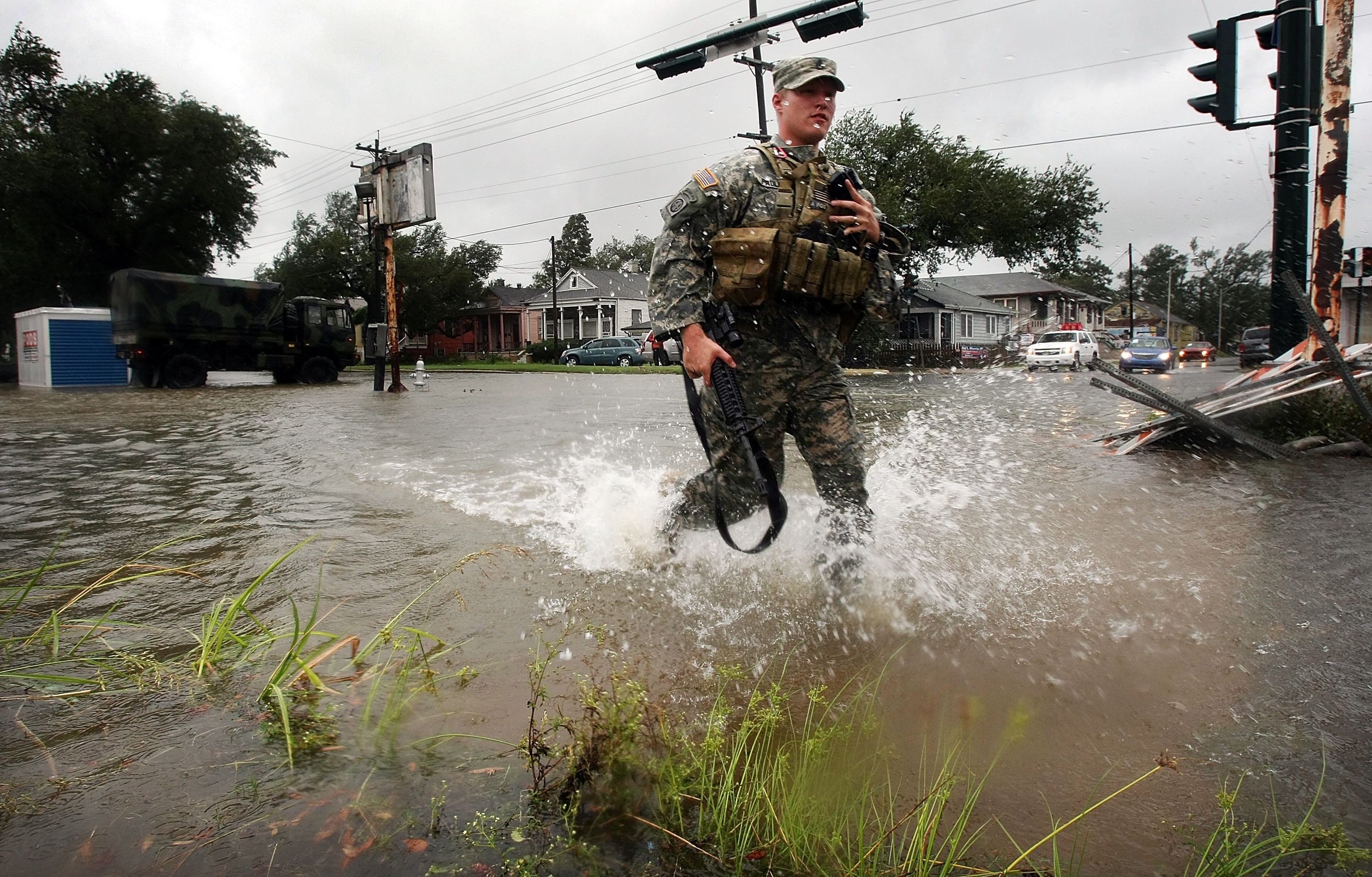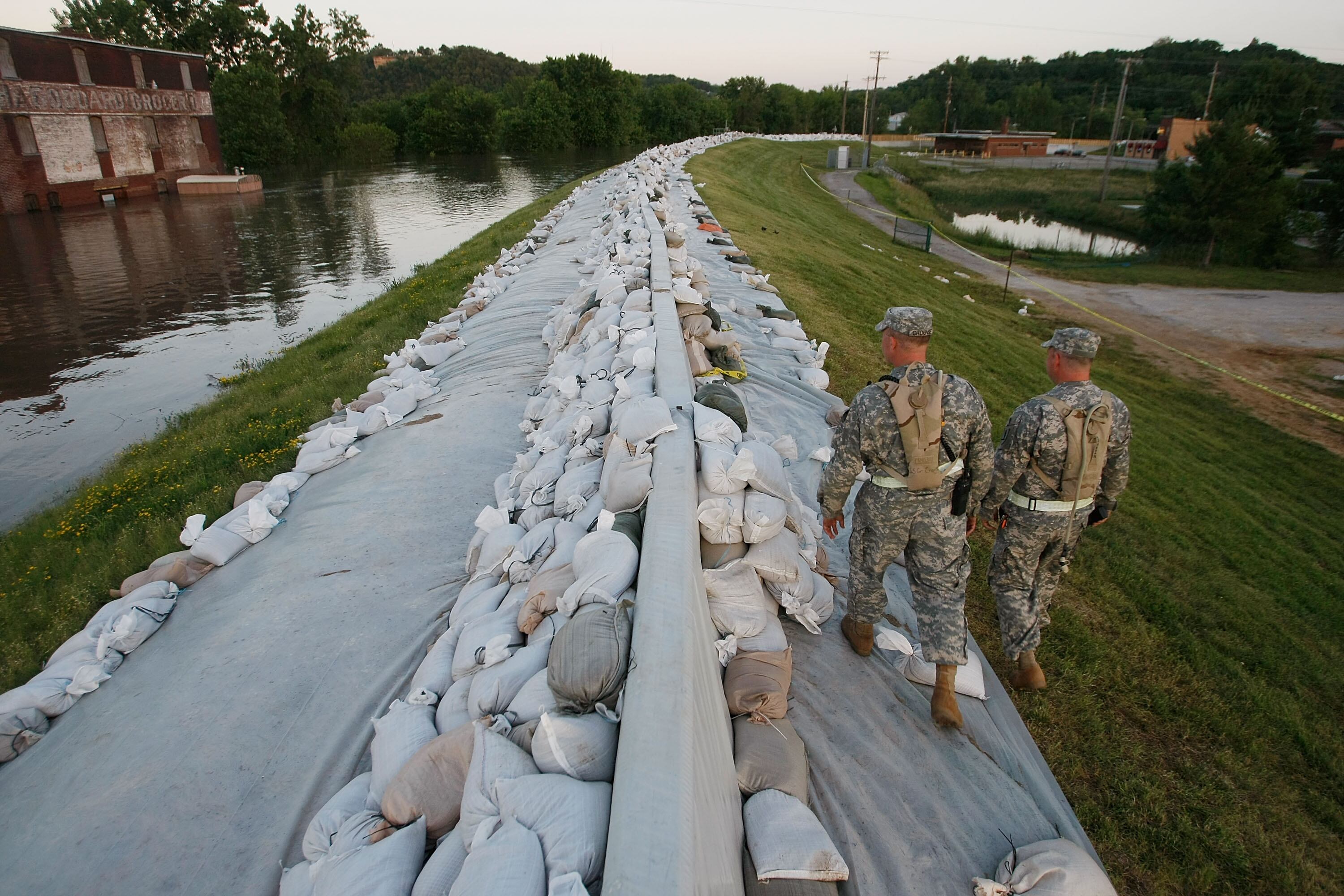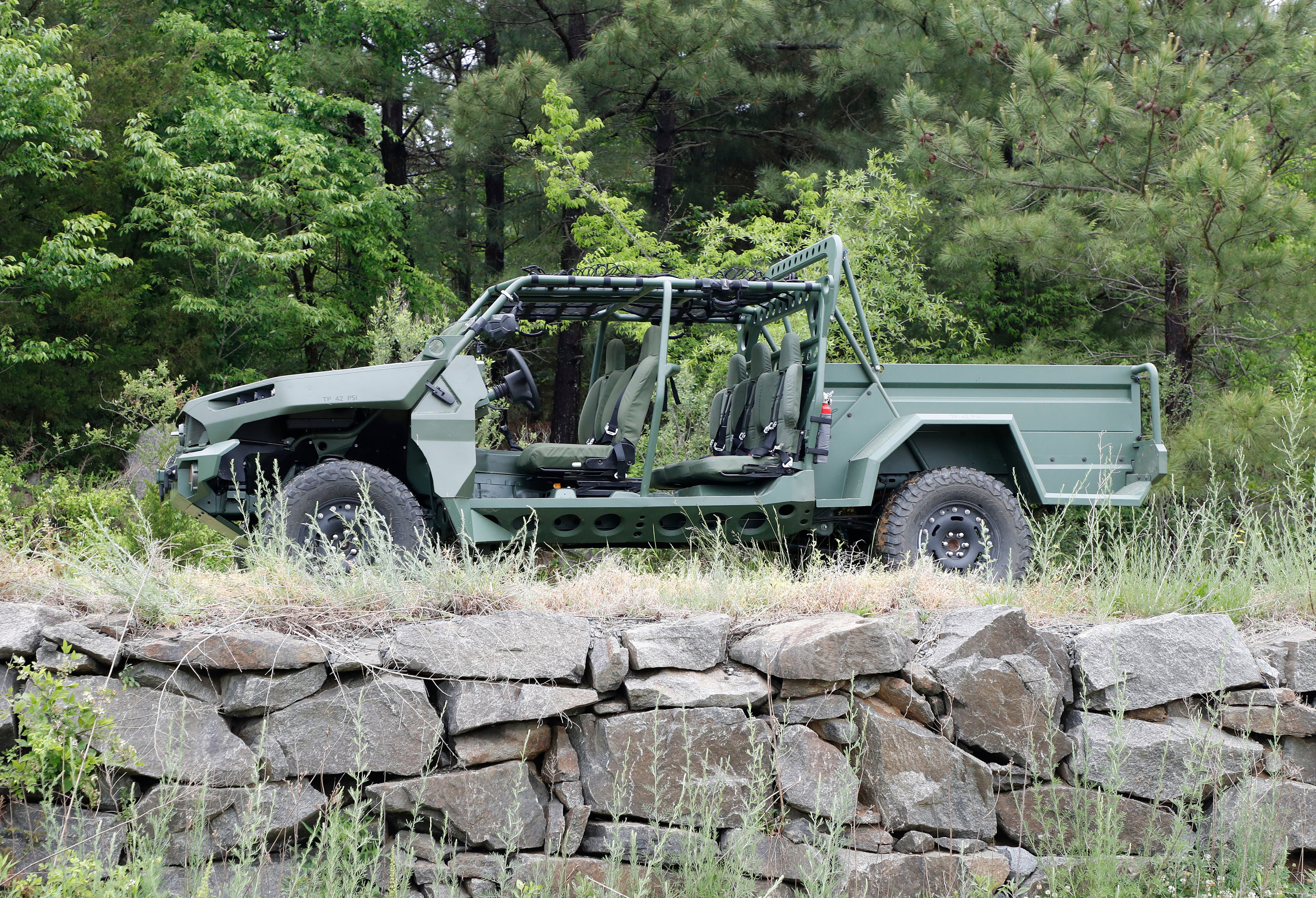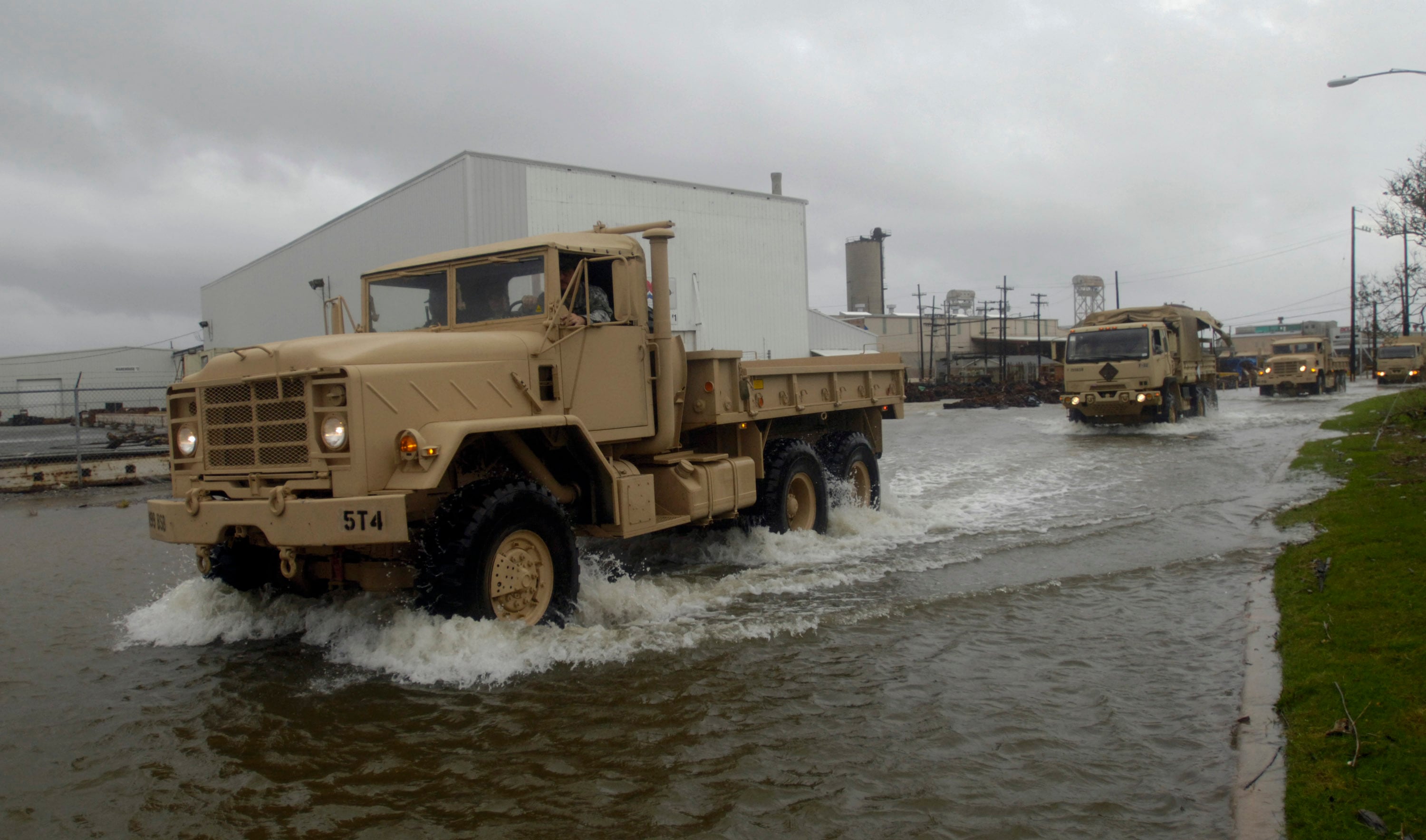WASHINGTON — The U.S. Army plans to install a microgrid on all its installations by 2035, field fully electric tactical vehicles by 2050, and ensure all operational and strategic exercises and simulations consider climate change risks and threats by 2028.
These are just a few of the goals the service outlined in its new climate strategy, published Feb. 8.
“The climate strategy is important to address the changing climate and the threats that are coming from climate change — both how our forces operate in a climate-altered world, but what the Army can do to influence this and to mitigate our greenhouse gases and to reduce the effects of climate change,” Paul Farnan, the Army’s acting assistant secretary for installations, energy and environment, told Defense News in a Feb. 7 interview.
“The Army’s mission remains the same to fight and win this nation’s wars, and this strategy is actually going to enhance that ability to do so by increasing the capability of the force,” he added.
The strategy recognizes the service will need to adapt to operate in and protect itself against harsher environments that could lead to increased global instability.
“For the foreseeable future, climate impacts will disrupt Army activities, displace individuals and communities, and increase the frequency of crisis deployments,” the strategy stated. “The Army must prepare for potential consequences including energy and water scarcity; damage to installations and infrastructure; displacement of and disruptions to operations, supply chains, and logistics; and imperiled [s]oldier health through exposure to airborne irritants like smoke and dust, disease vectors, and temperature extremes.”
The strategy sets up three end-state goals meant to help the Army “be a resilient and sustainable” land force. The first is to reduce by 2030 the Army’s net greenhouse gas pollution by 50%, compared to 2005 levels. The second goal is to achieve net-zero greenhouse gas emissions by 2050. The third is to take into account security implications of climate change in strategy, planning, acquisition, supply chain, programming and processes.

The Army details three lines of effort to achieve its climate strategy goals.
The first effort will adapt installations to be resilient and sustainable through infrastructure improvements and adaptation of natural environments, and mitigate greenhouse gas emissions.
The second line of effort will focus on increasing operational capability while reducing sustainment needs and making the service more climate resilient within its acquisition and logistics enterprises.
The third line focuses on preparing a force ready to operate in a world where the climate has changed.
Installations
The Army has more than 130 installations around the world. “Because of the systems and people they host, the communities they connect with, and the spaces they safeguard, installations anchor and guide some of the Army’s most consequential efforts to improve itself while responding to climate change,” the report stated.
In addition to the Army planning to install a microgrid on every installation by 2035, it also wants to achieve on-site, carbon pollution-free power generation for critical missions on all installations by 2040. Installations will have 100% carbon pollution-free electricity by 2030.
The strategy also said the Army must have a resilient energy and water supply “under all conditions” and noted recent achievements, including upgrading a water treatment plant at Fort Irwin, California, as well as setting up a 2.1-megawatt solar field at Fort Knox, Kentucky, and an 8.5-megawatt-hour lithium battery at Fort Carson, Colorado.
Already the service has begun or completed 950 renewable energy projects supplying 480 megawatts of power to the Army and has 25 microgrid projects “scoped and planned” through 2024, according to the strategy.
While the service plans to achieve a 50% reduction in greenhouse gas emissions from all of its buildings by 2032, it is also working to attain net-zero greenhouse gas emissions on its installations by 2045.
On installations, the Army will field an all-electric, light-duty, non-tactical vehicle fleet by 2027 as well as an all-electric, non-tactical vehicle fleet by 2035.
The Army increased its inventory of hybrid vehicles by almost 3,000 over the last three years, which has saved an estimated $50 million in fleet costs and cut fossil fuel consumption by more than 13 million gallons per year and greenhouse gas emissions per mile by more than 12%.
The Army will invest in more than 470 charging stations this year, the strategy noted.
The service will include climate change mitigation in land management decisions and incorporate the latest climate and environmental science into stationing, construction and fielding decisions, the document added.

Acquisition and logistics
The Army deploys with a long and large logistics tail, the strategy acknowledged.
The strategy aims to enhance operational capabilities, while minimizing the Army’s greenhouse gas emissions and reducing its effect on the climate.
“The Army can better position itself for future conflict by more effectively deploying and staging combat power across the globe, optimizing supply and distribution networks, and creating flexibility for the Defense Industrial Base,” the strategy argued.
The service plans to modernize its current platforms by adding mature electrification technologies and will field purpose-built, hybrid-drive tactical vehicles by 2035, then move to fully electric tactical vehicles by 2050 to include charging capability to meet the all-electric fleet’s needs.
Much of the Army’s current sustainment demand comes from its tactical vehicle fleet, the strategy pointed out. The service worked to reduce fossil fuel consumption and demonstrated tactical vehicle electrification kits on some platforms, which resulted in a reduction of average fuel consumption by about 25% while boosting onboard electric output.
RELATED

The Army plans to develop an electric light reconnaissance vehicle prototype, expected to enter testing before September 2023, according to the strategy.
The service is also working to integrate hybrid electric technologies into future and existing platforms. Oshkosh, for instance, recently unveiled its hybrid electric version of the Joint Light Tactical Vehicle.
Army Futures Command, Army Materiel Command and industry are working within a Power Transfer Cohort to develop concepts and designs as well as prove out technology that could help the Army move to electric vehicles.
The service will use predictive logistics to make more “more precise and faster decisions” and establish policies that “standardize” contingency basing to reduce field requirements, the document said.
The strategy also said the Army wants to reduce operational energy and water use by 2035 and achieve carbon pollution-free contingency basing by 2050.
“Electric service is a key component of contingency basing,” the strategy stated, “but the heavy reliance on fossil fuels for electricity is hampering the Army while increasing risk and cost.”
The Army is working with industry on deployable power generation and storage, having already fielded the Advanced Medium Mobile Power Source family of generators in 2013.
“To reach their full potential though, these generators need to be deployed as part of a microgrid system paired with battery storage,” the strategy said. “The necessary battery technology exists and is improving every year, and the Army will move to acquire, implement, and help advance this technology.”

When buying construction materials, the Army plans to “buy clean” and choose materials with lower embodied carbon emissions. The service will also analyze by 2025 all tier 1 suppliers for climate change risks and vulnerabilities and will develop plans, policies and contracts by 2028 to ensure the supply chain is resilient, according to the strategy.
Army Materiel Command’s ongoing supply chain optimization analysis is one of several strategic-level initiatives meant to improve the supply chain’s resiliency and decrease vulnerability.
The service is also implementing a revised energy key performance parameter and pursuing net-zero greenhouse gas emissions from all procurements by 2050.
Training
“The Army must proactively train its people and prepare a force that is ready to operate in a climate-altered world while simultaneously maintaining the ability to win in combat,” the strategy read. “Such preparation requires shifts in what and how the Army trains its people, units, and headquarters.”
Beginning in 2024, the service will publish climate change lessons and best practices every two years, and by 2028 it will update its programs of instruction to include climate change topics, according to the strategy.
The Army wants to grow by 2035 the number of soldiers and civilians serving in strategic headquarters that have advanced credentials on climate change issues. By 2028, all Army operational and strategic exercises and simulations will incorporate climate change risks and threat considerations.
By 2028, the Army plans to incorporate into all of its training efforts ways to reduce greenhouse gas emissions.
The service has begun “building climate literacy” into training, the document noted. “This effort aims to provide an understanding of the Army’s influence on the climate and climate change’s influence on the planet.”

How to move forward
Farnan said the Army Climate Action Plan is coming soon. While the strategy lays out what will be done, he said, the action plan will detail implementation.
“This is a long-term strategy,” he said, “so we don’t have every detail mapped out yet, but we are building some room in the [five-year budget plan] for this. There’s going to be climate-specific initiatives, but I’d also say that just because they’re not tagged as climate doesn’t mean it’s not going to apply to it.”
Much of the Army’s ongoing modernization initiatives will directly affect the climate strategy, he added.
The Army is finding additional ways to pay for the strategy.
“We’re looking outside of appropriated funds, too, looking for partnerships,” he said.
“We’ve got the energy savings performance contracts that we work with the energy service companies, where they invest in efficiencies on our base and we use the savings to pay that off,” he added. “We get these improvements without having to do upfront investments.”
The Army, for example, will take tracts of lands on bases and lease them to a local utility or energy service company so they can build something like a solar panel array, he said. That array would feed back into the grid, powering the base and the local community.
“It’s a win-win,” Farnan said.
Jen Judson is an award-winning journalist covering land warfare for Defense News. She has also worked for Politico and Inside Defense. She holds a Master of Science degree in journalism from Boston University and a Bachelor of Arts degree from Kenyon College.





